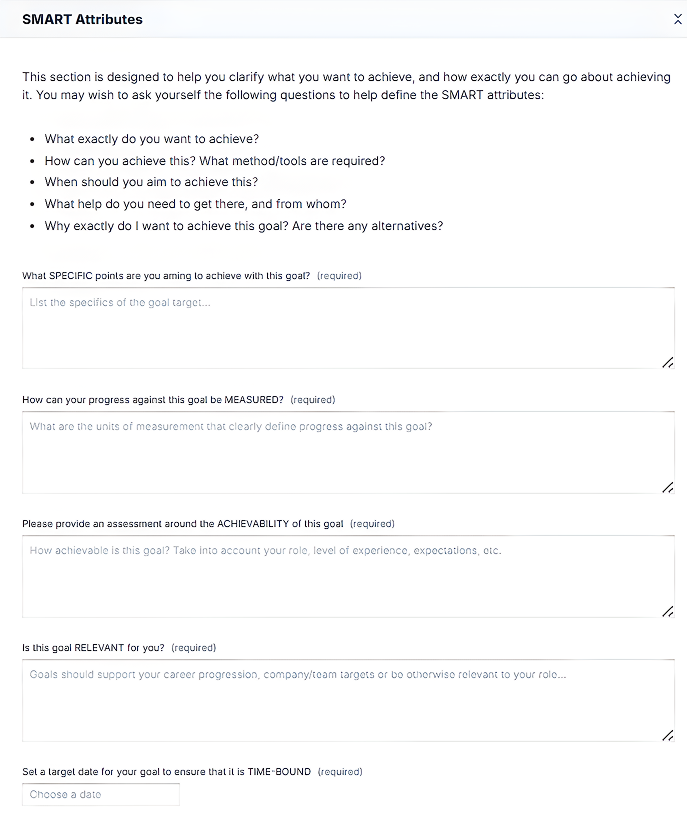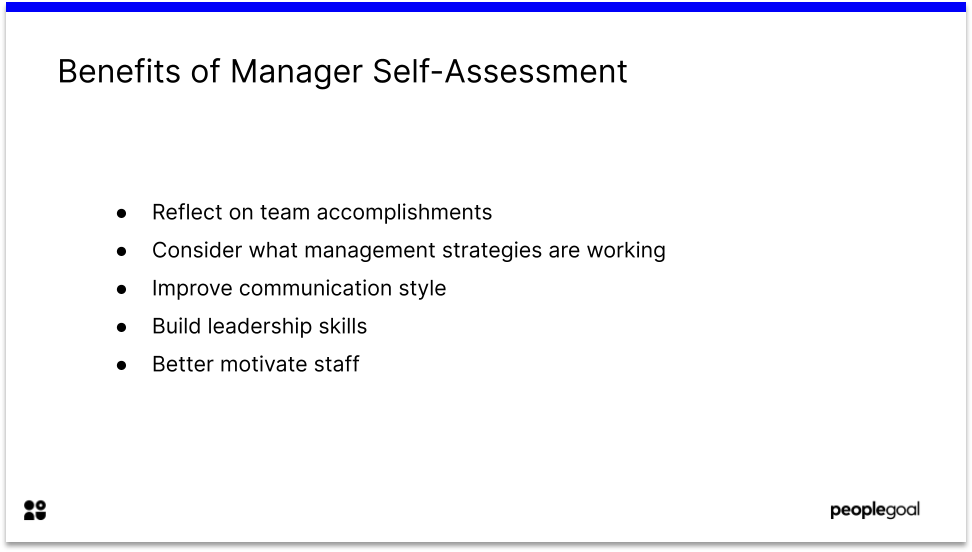Performance review ratings are used to quickly gauge the performance of employees across a company. They are one of the most tried and tested forms of performance review. A three-option rating was legally mandated in the U.S. Performance Rating Act (1954). The conventional wisdom is that they simplify annual reviews, as HR can track progress and benchmark employees. The numerical rating scales seem to speak for themselves. From a macro perspective, performance review ratings (PRRs) appear beneficial.
However, they are often unpopular with employees. Ratings can be irregularly applied, and, left unchecked, unconscious bias comes nefariously into play.
If a company relies too heavily on PRRs, they are likely to be getting an incomplete and even distorted picture of how their employees are doing. How might this impact employee motivation and fostering teamwork?
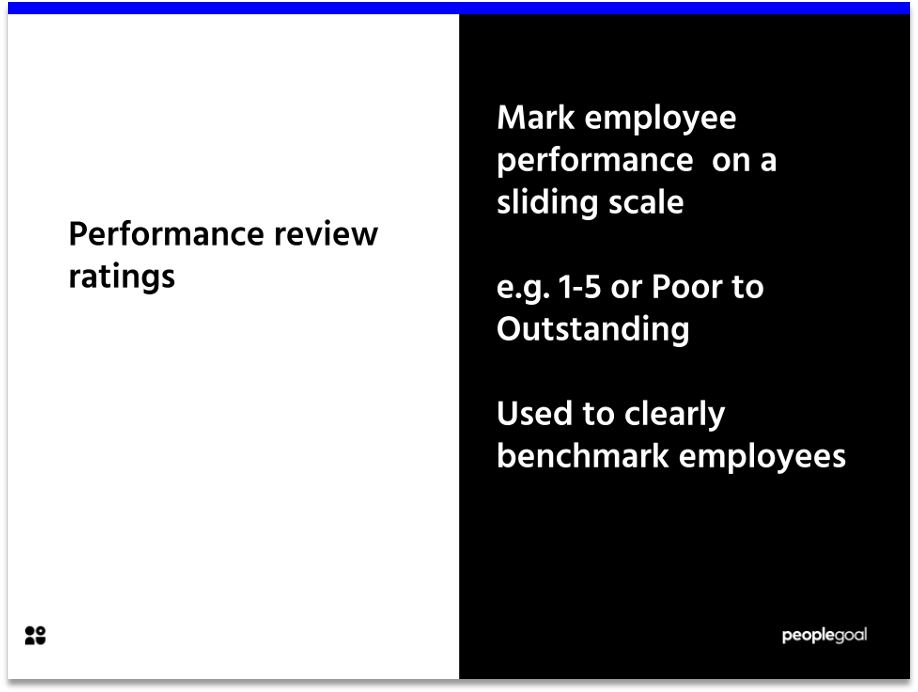
What is the goal of a performance review and performance review ratings?
To place employee evaluation scales in context, it’s important to consider what performance reviews are actually for. They should initiate a moment of reflection for an employee. While the term ‘review’ emphasizes this reflection and looking back, they should also be forward-thinking. They should constructively aid employees to set or adjust personal development goals. A review needs to be evidenced with events, accomplishments and experiences so that goal-setting can be realistic and actionable and yet also inspire improved outcomes and engagement.
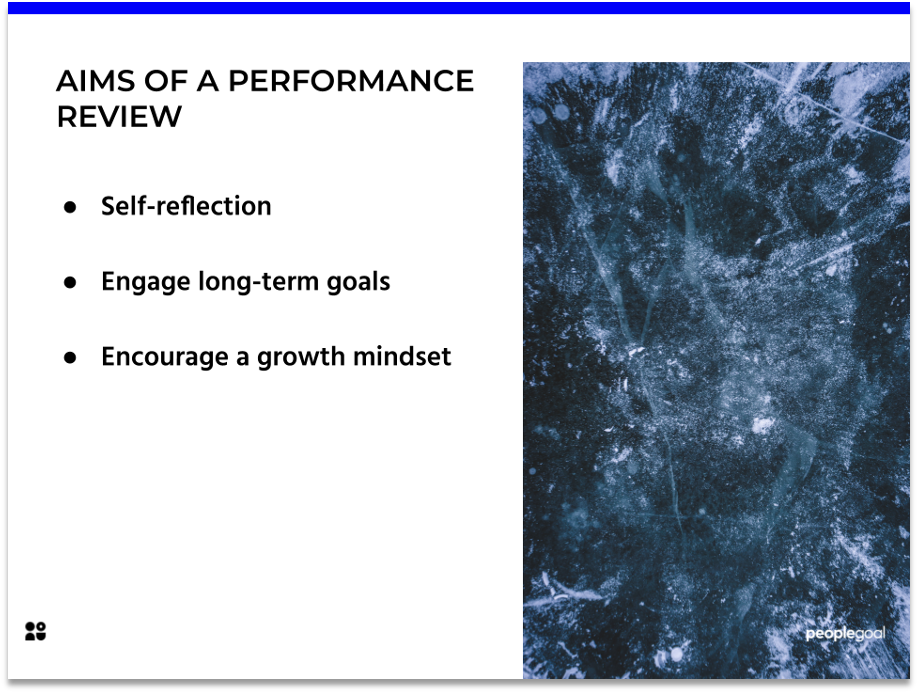
Do performance review ratings encourage forward-thinking?
Ratings often use scores between 1 and 5, or a sliding scale from “Unacceptable” to “Excellent”. This is cozily familiar to us – from grade point averages and exam marks, to star ratings on comparison websites. These snapshot grades can be a useful shorthand for employee and employer alike, encapsulating hard work and achievements into a single figure or benchmark.
But what are the consequences of such reductive measures? Grades are useful markers for moments of transition: into a new career or for graduation. But a company that hopes to retain its talent should adopt a different approach to the ‘final exam’. A properly structured review should engage long-term goals and encourage a positive outlook.
By moving away from limited ratings, we can shift the focus of reviews onto the employee’s engagement. Suddenly evaluations become constructive and more likely to add value.
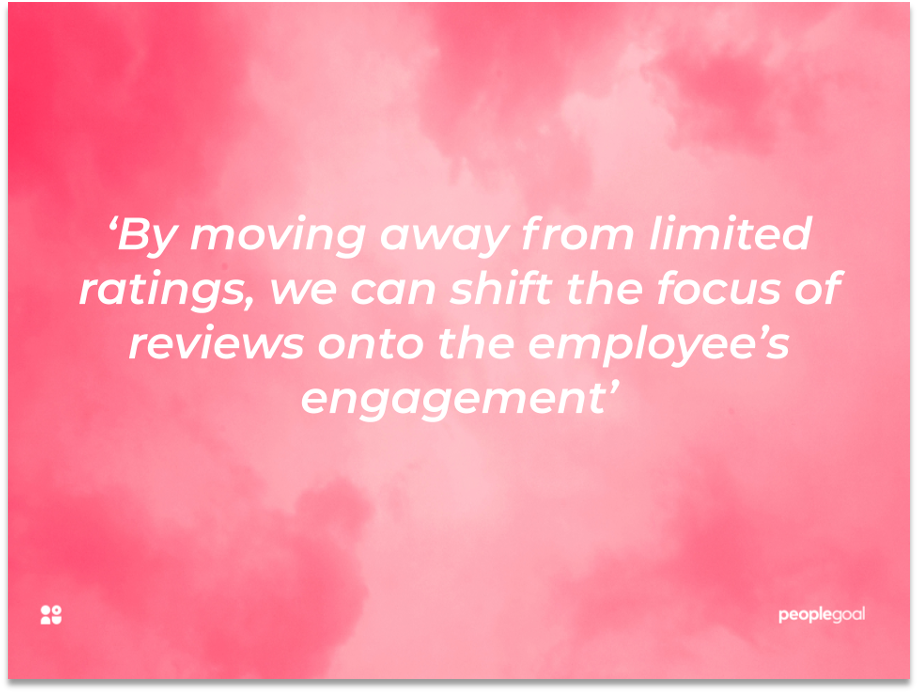
When performance review ratings sliding scales miss the mark
A study by Psychological Bulletin indicates that a third of performance reviews studied actually decreased performance. Conventional methods clearly need a rethink. The annual timing of them makes ratings especially problematic. A single ‘Satisfactory’ rating does not reflect the ups and downs of eleven-months of work.
And there is disparity in the way managers use ratings. Some are loath to award a 5 as it suggests there is no room for improvement, while others lavish employees with high ratings whilst also indicating areas of deficiency. It is not unheard of for there to be a huge jump between ‘room for improvement’ to ‘high performer’, meaning that those who are performing well but do not meet the highest category are not praised for their accomplishments.
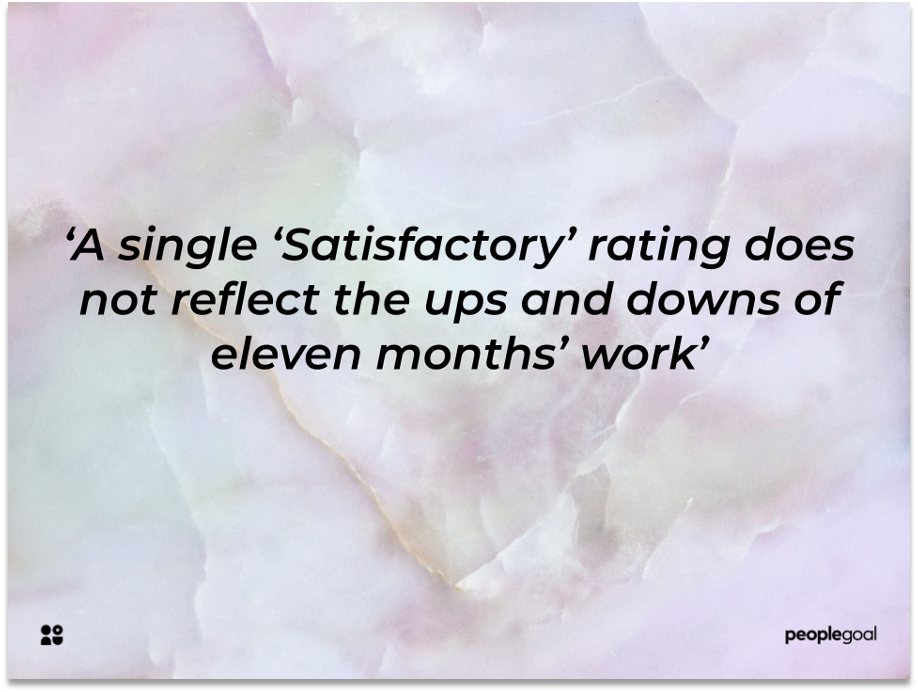
Reduced to a Number: Demotivated Employees
All this jeopardizes employee engagement. A study by Acas highlighted that 10% of employers thought their performance management systems were demotivating staff. An impersonal rating without adequate context appears to staff that the manager has not bothered to really consider their work. A numerical rating implies that feedback is a closed process, not a responsive loop as it should be.
Alternatively, 360 Degree Feedback creates a culture of openness and trust. Employees are more likely to view the feedback process as productive – rather than feeling like the student at the bottom of the class.
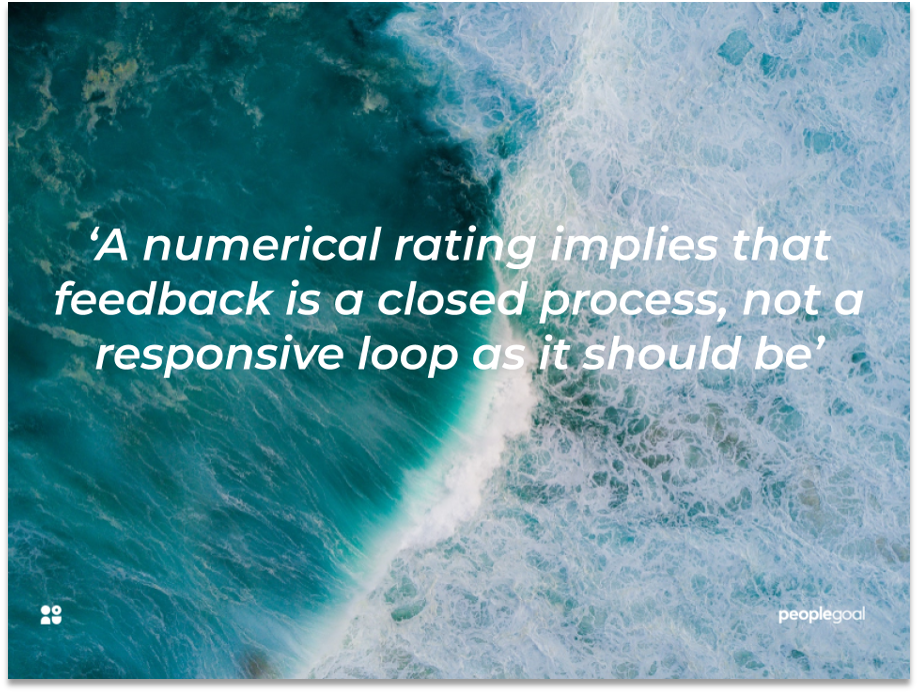
Ratings are often viewed as a convenient method for quantifying progress in annual reports. But if this is not supplemented with more regular personal feedback, they can demotivate rather than energize employees. Using less generic language in reviews helps clarify goals. This encourages self-reflection: the first step towards positive change.
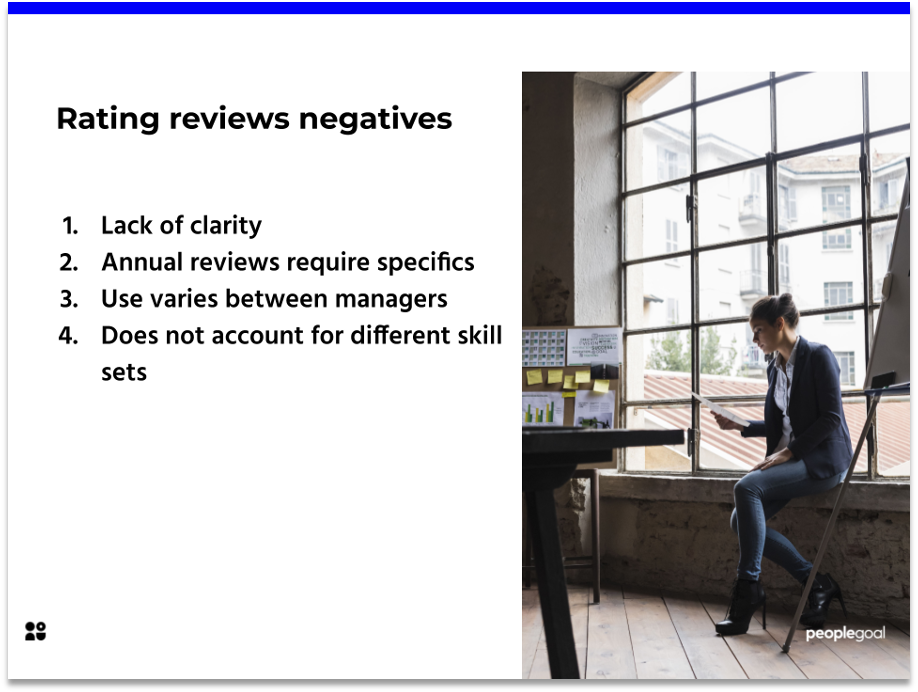
Performance Review Ratings & the Risk of Unconscious Bias
Performance reviews should prompt managers to reflect on how they arrived at an employee evaluation. Ratings alone do not speak for themselves. They need context and evidence. Without adequate oversight, PRRs risk the influence of unconscious bias. This is known to have a bearing on performance reviews more widely. Managers are more generous in employee performance reviews to staff they hired. Gender bias is also known to play a part.
Modern Performance Review software can help mitigate bias by standardizing evaluation criteria, tracking decision trends, and promoting consistency across teams.
Removing performance review ratings means taking the time to write considered and nuanced appraisals. Managers may change their opinion on an employee during the review process, or re-think a judgement based on the evidence. Performance appraisals should prompt their self-awareness. Evidently, such work has a time cost- but this pays dividends – with engaged employees who have a clear direction of travel.
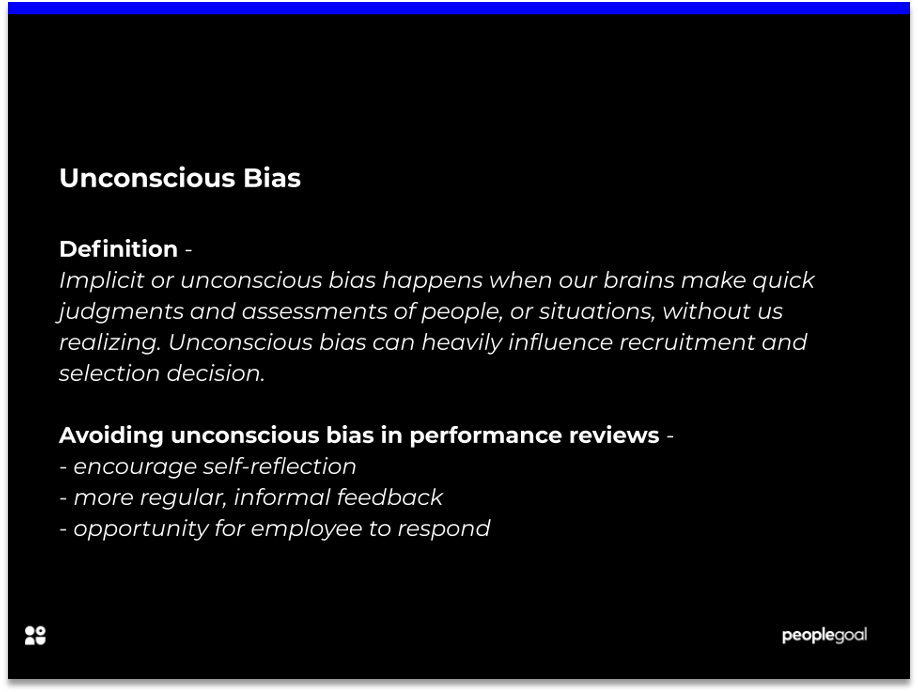
Performance review ratings’ effects on perception of teamworking
On a surface level, reviews assess individual performance. But look closer, and they also present how individuals relate to one another in a company. Remember that personal accomplishments mean little if they do not correspond with team goals. If the only intention is to separate the over-achievers from the under-achievers, performance reviews are simplistic- and most likely tell employers what they already know! Team building should be part of the thinking behind them.
The trouble with performance review ratings sales is that they pit employees against each other in a way that is not always conducive to team building. An employee who works on a shared project might receive an arbitrary ‘room for improvement’, while a colleague achieves an ‘Excellent’ rating for the same work. This creates the feeling that teamwork is not valued.
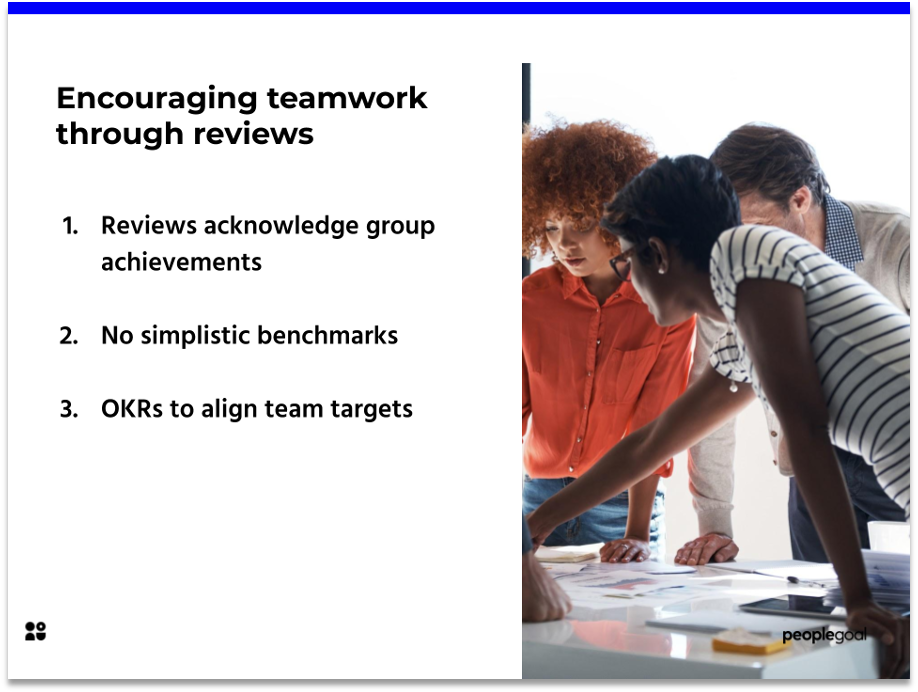
Valuing skills for the new normal
Anna Tavis says of the pandemic that “Teamwork and collaboration are at a premium during this crisis” and reviews should shift to rewarding these skills. What if someone performs excellently in teamwork, but falters in another area? An evaluation should consider the varied attributes and challenges that comprise performance. Solution-oriented reviews can even improve teamwork. Shared goals are essential to nurturing a group-oriented mentality and should not be viewed as separate to the evaluation process. OKRs can help align team targets.
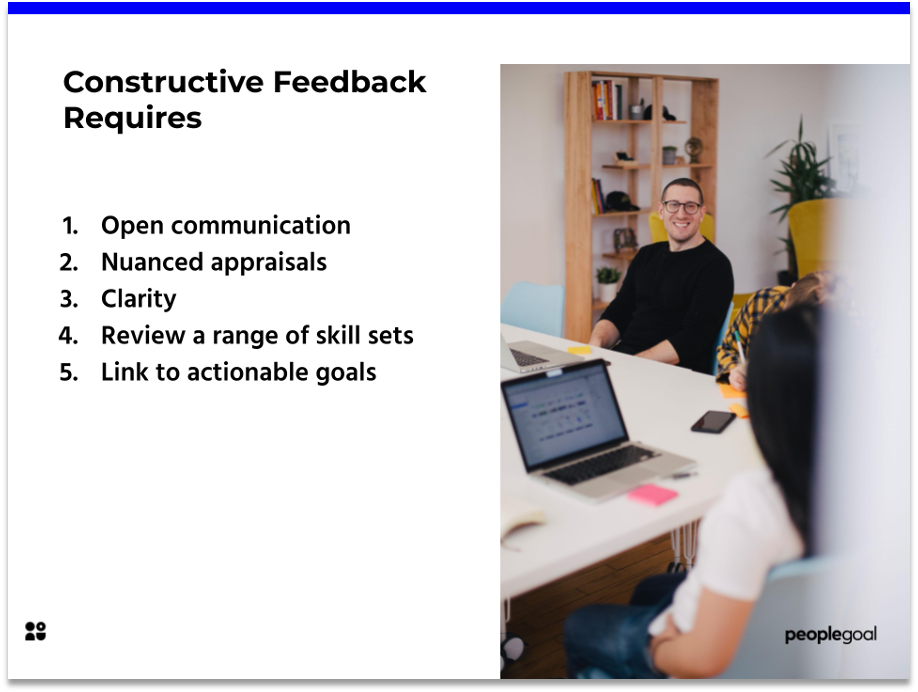
A Review System that meets the challenges employees face
A review system that demotivates staff is likely to lead to a high turnover. According to a study by Fast Company, 62% of millennials felt ‘blindsided’ by performance reviews. Pandemic-enforced isolation can already hinder and weaken employee-manager relationships and communication. Consequently, reviews are becoming more regular – bi-annual or even quarterly. However, it’s not just time scales that need adjusting –the techniques used in employee evaluations are ripe for change.
The way forward with performance review ratings
Managers should consider transitioning away from a reliance on performance review ratings. The tactics of a bygone-era shouldn’t hold employees back from success. A prescriptive rating lacks a clear line of sight. Instead, an Employee Performance Improvement Plan can build common purpose. Similarly, take care to integrate reviews with SMART goal targets and specific and actionable steps. A company seeking to set itself up for growth must invest in its own teams and set out a plan for future success: inspiring and improving employee engagement will be crucial to this strategy.
Ready to 3x Your Teams' Performance?
Use the best performance management software to align goals, track progress, and boost employee engagement.



